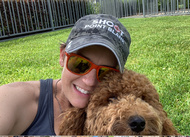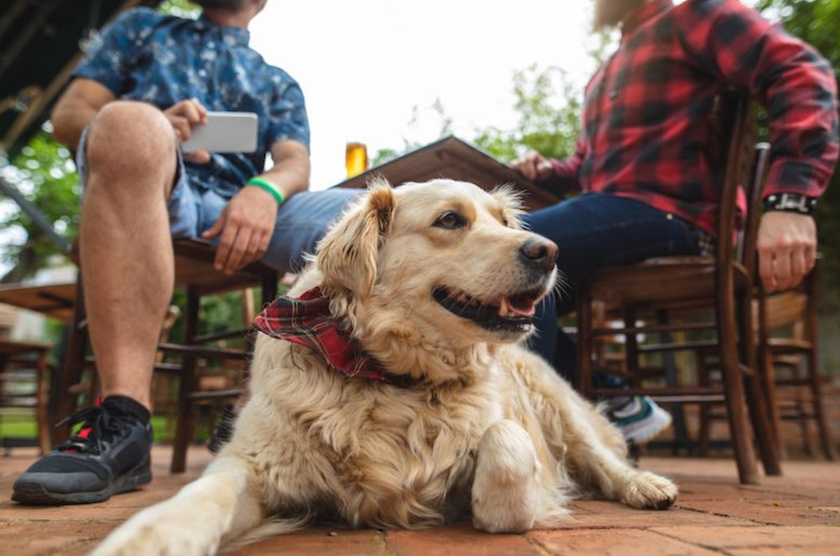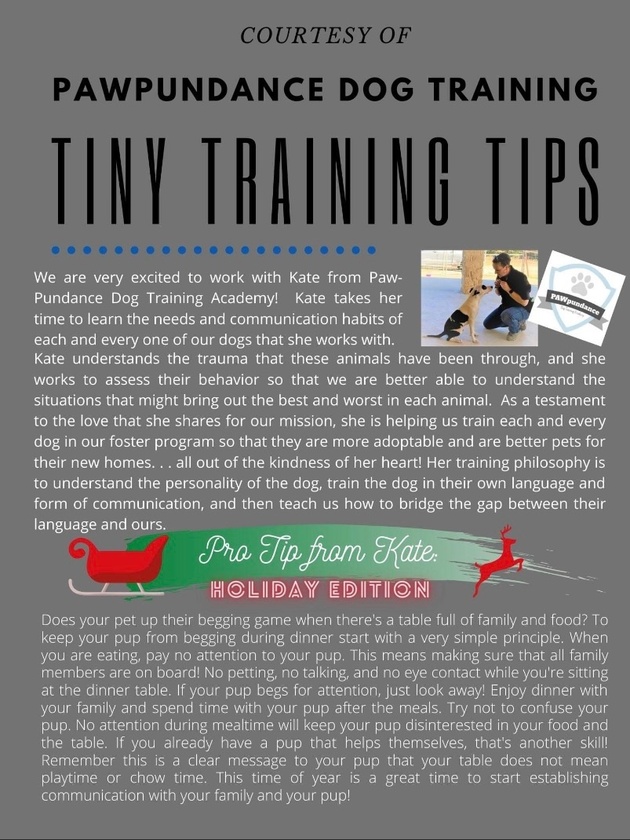
It’s ok! We’re here to help. We speak a little dog and can help translate for both of you. It’s probably just a miscommunication! And we are here to help get you both speaking the same language! Woof!
Connect with the PAWpundance training team and other members of the dog community to discuss better ways to communicate with your furry house guest.
**To get started USE code: TRIAL1month **
Ted is a smart cookie. But aren't the pups all kind of smart in they're own way... While Ted was so smart with this stuff, this little booger was demanding. So realizing that not every bark a puppy does is a demanding bark, we had to first start to learn his different barks. Sometimes he was scared or fearful etc. So we really had to watch his behavioral health a bit first. Then we went to work on that demand barking.
Instead of having the attitude of "SHUT UP" - we tried to replace his behavior with an acceptable behavior. Acknowledging that he had a rather loud way of asking for things... to the point of demanding - we needed to teach him a new way to ask. We really needed him to learn a new way to talk to us before he became a blueberry...
So we started with basics. He excelled at reward based training because of his love of food. But - alas, he's a smart guy and when he felt he was working too hard for the treats we were providing - we got the cold shoulder. So we had to up the ante. So we showed up with better treats.
When Ted decided he was working too hard, he would go sit under a bench and wait until we had better treats or better motivation... who was being trained here?
Eventually we found a balance with our very smart pup, Ted. We were able to get him to do our PAW5 - sit, down, stay, loose leash walk and come. And then the real work began. We began working on impulse control. We worked his sit-stay. We were able to leave the room and return to have him still in the same position. We could put him in a sit, leave the room, ask for a down - from the other room and he would respond. This was a huge feat. But he was still rather demanding with his barking.
The reason we worked the impulse control (stay exercises and such) is so the dog can learn to control himself even when presented with temptation - even when he know the human isn't watching... because he knows there is a better reward awaiting. So... We worked this with the demand barking as well. We don't show the process of him learning the "relax" but the product is in the video. We taught him Sit, Down, Relax, and Over.
It's difficult for "most" dogs to bark in a down. It's a "calming" position for most of them. Ted had no problem. Being a smaller dog... he just didn't struggle barking from the down position. So we took it a step further. We asked him to put his nose on the ground for a "relax". In this position we got closer to a Chewbacca sound than a bark - which wasn't perfect but way better - even laughable. And he could not bark or moan on his side (also an important position for vet visits).
So when he learned to start "throwing" down for treats instead of begging with barks - he got rewarded for his downs. Then he had to start going all the way into a relax to get attention. If he was still moaning in a relax, his Hooman was instructed to look away and turn away until the sound stopped. He sometimes got louder and sometimes tried other positions.
The key to changing this are the people living with the dog. I can teach the new skills but environment that the dog adapted to, that potentially created that behavior that you don't like... idk - FurMama, you and the family need to make some changes too. I have a loco Yorkie. I am aware of the duality of this. My yorkie has been with me since young puppy. I'm part of the reason for his crazy... and I'm a dog trainer. So solidarity. I understand - none of this is easy. Actually - correction, training the dog is probably the easy part. Living with the dog is the hard part. omg.
So Ted, like my yorkie, very smart. And when he barks it's a matter of NO ATTENTION - because he's trying to command attention for something. When he calms down - and provides calm behavior, then respond and notice him... what is the hardest part of all this - why doesn't this work? Because in the training phase, we have to take time to actively notice and reward a calm dog trying to get our attention by making no noise... what?? Yep. And we have to totally ignore a barking dog desperately trying to push every one of your buttons to get your attention. And during this phase of training - if you can exist in backwards world long enough for your dog to reach a place of understanding, then you can have serenity. But trying to get there feels like madness.
And Bonus for me - I'm just a trainer. I don't have to do this. hahaha. I go home and leave the pups for you all to experience. There was a time where they came home with me. My husband and I went mad in our downtown apartment (thankfully dog friendly loft). The barking until all hours was insane. So believe me, I feel for you. I have been to backwards world. And you just need to stick it out. See it through.
Oh... And expect and extinction burst. 1. Dogs will try to bark first. If it works 1 in 10 times they figure it still works. So until it never works, they figure - eh, it's worth a shot - what do they have to lose. 2. When there is a behavior like barking that is about to burn out, expect a burst before the burn out. It's probably not some well thought out process - Like the dog is sitting around contemplating the extinction of their favorite behaviors that you now classify as "bad" ...like what's up with that?? ...But there have been studies, and I've seen it in my practice. My client is bummed out. "oh man this just isn't working. I'm not sure what we should do now. We've worked so had and it seems like we're regressing." yada yada. Well That's when we just agree to give it another week or so. And you can bet, we turn a corner - IF - my client stays with it. IF my client gives up, the dog doubles down harder on the behavior and they just learned that they have to bark harder. It gets flipped and confused like the final scene from Rudy or something - like you might encounter more adversity, you might have to do a down, I might ignore you, but you can do it - bark harder and louder and longer. You can still get your way.
So if you commit to it you have to see it to the end or you totally mess up the movie that your dog is watching. Because if she give us up Ted, he's so smart - he will really truly believe some other movie was playing, I was the bad guy that made him work for the treats. I enslaved his mother's attention and he freed her with his determined barks. So I hope she stuck with it.
Can you hear his baby whine in the clip?
Ted is doing an amazing job in this video - and when Ted moved away he was such an amazing little guy!! We will post another video of his skills soon! Really a brilliant pup... and those are the ones to watch. hahaha! Great Job TED!!
Welcome to PAWpundance Dog Training Academy on Locals.com!
We’re thrilled that you’ve joined our community! PAWpundance is a place for positive, dog-loving people to come together, share experiences, and help each other grow. Locals offers an “ad-free experience,” so even a small contribution helps support our tech and keeps our community thriving.
We want to see your furbabies!
We’re here to assist with any questions you may have about training, behavior, and more. At PAWpundance, we believe in blending knowledge with a bit of fun—expect plenty of paws, puns, and maybe even a dance or two! Together, let’s enjoy some laughs and build stronger relationships with our pups.
Our Philosophy:
We’ve invited another species to live in our homes, and our dogs are much more than accessories; they’re our guests. They don’t speak our language, and like in the movie E.T., we don’t want to be the intimidating figures trying to coerce a scared, confused being. Instead, we want to be like ...
Eye Contact, Eye Contact, Eye Contact!
Reward every glance. Start by reinforcing brief glances, then encourage your pup to hold your gaze a bit longer. Gradually phase out your part of the eye contact—your pup will learn to watch you and adapt to your movements naturally. This approach helps them learn to walk with you without relying on leash cues.
Remember, the leash is purely for safety—not for communication.
Take a look at this video with Meghan and Buckee. Buckee is watching Meghan closely, and she rewards him by making eye contact, smiling, and offering treats. Meghan also looks forward occasionally, teaching Buckee to walk with her in sync.
Notice that Buckee is a reactive pup, so the leash is essential for safety, especially if he responds to something unexpectedly. However, it’s only used for physical control when necessary. When Buckee refocuses, Meghan reestablishes instructional control, and they continue their walk together. She does a fantastic job of engaging with him! In ...
Loose-Leash Walking Tip:
Where you reward makes a big difference! Try using the hand on the same side as your dog when giving treats or praise.
When you reach across your body to reward with the opposite hand, it draws your dog’s nose in front of you, encouraging them to move ahead and potentially start pulling.
In the video of Meghan and Domino, Meghan holds the leash with her left hand while Domino walks on her right. She rewards him by petting and giving treats with her right hand. This keeps Domino walking by her side on a loose leash, rather than in front, pulling her along.
Next time you’re out walking with your pup, try rewarding with the hand on the same side as your dog.
https://twitter.com/wholedogjournal/status/1295508215740932098?s=21
How to teach you pup to be a good dining companion! What a great skill!

https://twitter.com/wholedogjournal/status/1292609106637987840?s=21
This is about counter-surfers, but I love the description of trying to shame dogs. This author, Pat Miller helped me understand this concept in her book the Power of Positive Dog Training.
If you’re still on Twitter, the Whole Dog Journal is a great group to follow. Lots of fantastic info!













